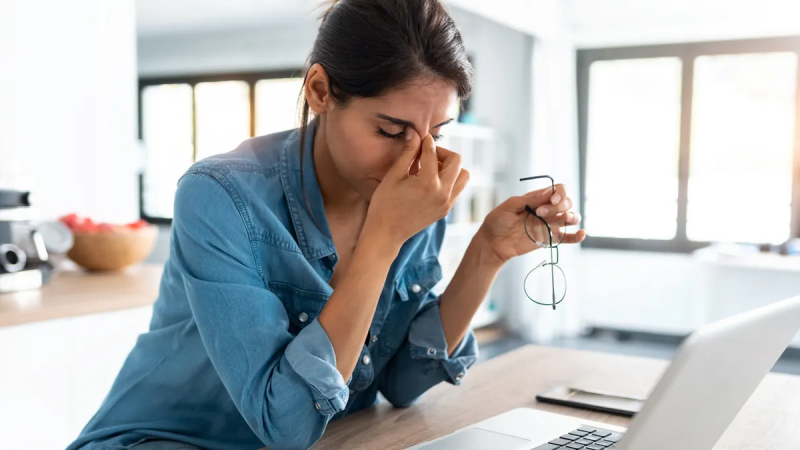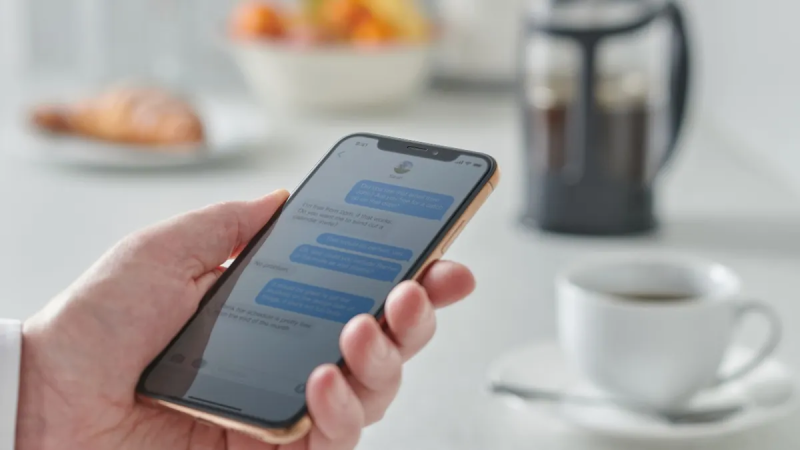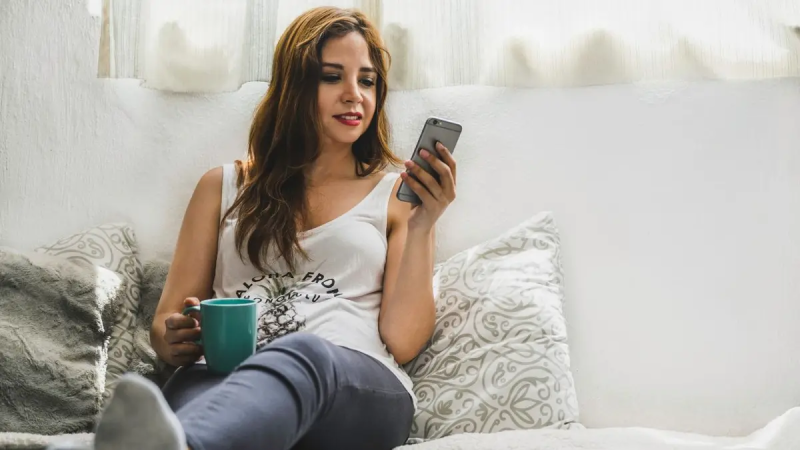Digital eye strain is a growing issue as the muscles of the eyes work overtime, warn vision experts
These days, while using your devices, you may be suffering from headaches and burning eyes, experience blurry vision, feel tired — or all of the above.
More than likely, the constant or frequent use of your cellphone, tablet, laptop and television — all the screens in your life — are the cause.
People who are constantly staring at screens and devices may experience eye strain and much more, according to a recent study published in Cureus, The Journal of Medical Science.
BE WELL: TREAT AND PREVENT DRY EYE SYNDROME FROM EXTENDED SCREEN USE
Vision experts weighed in on digital eye strain, a serious medical concern today — and what people can do to reduce the risks.
Here's a deeper dive.
What exactly is digital eye strain?
Digital devices like computers and smartphones emit blue light. And as blue light enters the eye, it scatters before reaching the retina, causing our eyes to work overtime to try to focus and process the light from the screen on our devices, said Danny Mathew, O.D., a VSP Vision network doctor with EYEWORKS in Fort Worth, Texas.
VSP Vision is the nation’s largest and only not-for-profit vision benefits company.

Vision experts weighed in on digital eye strain, a serious medical concern today — and what people can do to reduce the risks to their eyesight. (iStock)
"The result is visual strain and fatigue known as digital eye strain," said Mathew.
This defocused light is perceived as glare, he said. And "the more blue light in the environment, the greater the glare."
WHY ARE SOME PEOPLE COLOR BLIND? HERE'S THE SCIENCE BEHIND IT, INCLUDING HOW TO RECOGNIZE SYMPTOMS
Blue light is linked to the onset of digital eye strain in as little as two hours of exposure, according to research — and The Vision Council says that more than half of all Americans experience symptoms of digital eye strain.
"These symptoms are a result of the muscles in our eyes overworking to focus on the screen in front of us."
Digital eye strain symptoms can include blurred vision, tired eyes, sore eyes, headaches and dry eyes, said Mathew.
"These symptoms are a result of the muscles in our eyes overworking to focus on the screen in front of us and the impact of the light being emitted from our devices," he added.

"Be sure to take frequent breaks and look at other objects besides screens and close-up devices." (iStock)
When we’re using digital devices, we do not blink as much, so our eyes are not getting the correct amount of lubrication — resulting in dry and irritated eyes, Mathew told Fox News Digital.
What can people do to reduce the risks of digital eye strain?
There are a few steps to take.
"Adjusting your screen to a more comfortable distance is an easy fix to help minimize digital eye strain," said Jen Waderman, O.D., also a VSP network doctor with Bidwell Optometry in Folsom, California.
ALL EYES ARE ON GLAUCOMA THE ‘SILENT THIEF OF SIGHT' — AND THE TRUTH BEHIND 7 MYTHS
"You can do this by either moving your computer screen to arm’s distance or pulling your smartphone farther away."
Also, adjusting your device's brightness is another simple step that can help reduce glare and eye strain, she noted.

"Adjusting your screen to a more comfortable distance is an easy fix to help minimize digital eye strain." (Neil Godwin/Future via Getty Images)
Furthermore, a way to combat dry eyes related to regular computer and device use is applying artificial tears, but do exercise care in selecting your products, Waderman noted.
"Make sure they are preservative-free and definitely avoid any generic artificial tears, since there were a number of mass recalls earlier this year," Waderman said.
AS EYE DROP RECALLS CONTINUE, HERE’S WHAT YOU NEED TO KNOW TO PROTECT YOUR VISION
"Your eye doctor can help recommend reputable brand options for you," she also said.
The symptoms noted earlier such as eye strain, eye fatigue and headaches "are a result of the muscles in our eyes overworking to maintain clear and focused vision when viewing things up close," Waderman said.
"Get up, walk around, stretch or look out the window to give your eyes a rest."
"To combat this, be sure to take frequent breaks and look at other objects besides screens and close-up devices."
What products may help reduce the risk?
Lens products are available that help reduce excessive blue-light exposure. One example of this technology is TechShield Blue AB, said Mathew with EYEWORKS.
"It’s an anti-reflective lens coating that reduces exposure to blue light and combats digital eye strain," he said. "It also has a near-clear appearance unlike other blue light-reducing lens products that can give off a strong purple or orange/yellow hue."

If you experience discomfort in your eyes, don’t assume it’s nothing, experts advise. (Cyberguy.com)
Some blue-light glasses products may say they have that blue light "blocking" feature, he said — but they may negatively impact a customer’s visual experience.
"For example, a product may block more light than wavelengths in the UV/blue range, making it difficult to see in certain lighting conditions," Mathew said.
What day-to-day changes can reduce digital eye strain?
Whenever you find yourself spending a long time looking at a digital device, Waderman with Bidwell Optometry recommended taking frequent breaks.
"Get up, walk around, stretch or look out the window to give your eyes a rest," she said.
HERE'S WHAT YOU NEED TO KNOW ABOUT VISION LOSS AND HOW TO SHOW SUPPORT FOR THE VISUALLY IMPAIRED
"Power down your devices before heading to bed," she also said.

Follow the 20-20-20 rule: Every 20 minutes, shift your eyes to look at an object at least 20 feet away for at least 20 seconds. (iStock)
"You may also want to consider lowering the brightness of your screen or enabling blue-light settings such as night mode to help reduce the glare from your devices."
CLICK HERE TO SIGN UP FOR OUR LIFESTYLE NEWSLETTER
Daniel A. Greninger, M.D., spokesperson for the American Academy of Ophthalmology and ophthalmologist at Kaiser Permanente Antioch Medical Center in Antioch, California, said the American Academy of Ophthalmology suggests following the 20-20-20 rule to remember to blink and defocus the eyes.
Every 20 minutes, shift your eyes to look at an object at least 20 feet away for at least 20 seconds.
CLICK HERE TO GET THE FOX NEWS APP
And if you continue experiencing discomfort in your eyes — don’t assume it’s nothing.
"Instead, see an eye care professional for an eye exam," Greninger said.
For more Lifestyle articles, visit www.foxnews.com/lifestyle.
Disclaimer: The copyright of this article belongs to the original author. Reposting this article is solely for the purpose of information dissemination and does not constitute any investment advice. If there is any infringement, please contact us immediately. We will make corrections or deletions as necessary. Thank you.







